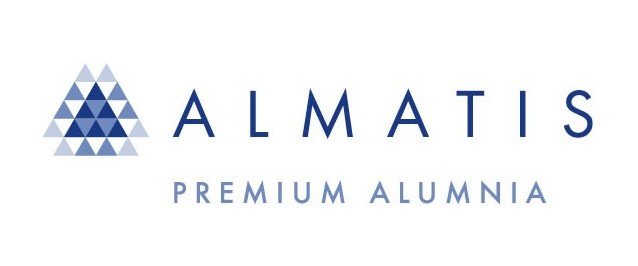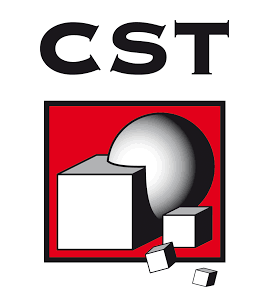Speakers, Abstracts and Presentations
Speaker: Dr. Jok Tang
Title: Welcome address
Speaker: Dr. Rene-Edouard Plessix
Title: Frequency-Domain or Time-Domain Wave Equation in Seismic Imaging
Abstract:
Seismic data represent one of the main sources of information on the Earth’s interior. To interpret seismic data, i.e. to obtain an image of the earth elastic parameters, we generally rely on the solutions of the elastodynamic wave equation. This notably allows us to synthetize a seismic experiment that consists of the recording of the wave fields due to an excitation at specific receiver locations. Because a seismic data set consists of thousands to hundreds of thousands of shot gathers, i.e. of seismic experiments, thousands to millions of solutions of the wave equation are required during an imaging algorithm. To simulate a modern active seismic experiment, we need to solve the wave equation in a domain of about twenty to thirty kilometers in each lateral direction and about ten kilometers in depth. Depending on the frequency content of the source excitation, this leads to a discretized domain of hundred to thousand points in each direction when we use a classic finite-difference scheme. Consequently the seismic simulation has a significant computational cost. Depending on the applications, we are therefore looking for the most efficient numerical approach. The time-domain wave equation is relatively easy to solve since standard time-marching approaches, leading to explicit schemes, are efficient. In fact, when we need to simulation the complete band-limited time response, the complexity of the time-marching algorithm is optimal. However, certain imaging algorithms may only require the responses at discrete frequencies. In these cases, we may wonder if solving the frequency domain wave equation, i.e. the Helmholtz equation in the acoustic case, would be more efficient. The main difficulty is that the frequency-domain domain wave equation leads to a linear discrete system that is implicit and indefinite. Direct and iterative methods to solve this linear system have been proposed to solve this linear system. However, they remain challenging in real-sized three-dimension seismic imaging applications.
During this presentation, after a brief description of the seismic imaging problem, I will review some of the seismic imaging techniques based on the frequency-domain wave equation, explain why currently the time-domain approach is preferred for the real-sized applications in exploration geophysics, and discuss some of the frequency-domain approaches that are under investigation.
Speaker: Dr. Christiaan Stolk
Title: Accelerating Helmholtz Solvers using an Outer Classical-Multigrid Iteration
Abstract:
Iterative Helmholtz solvers are relatively expensive, either using many inexpensive iterations, or otherwise a smaller number number of relatively expensive iterations. In recently developed solvers, an outer two-grid iteration was added and the expensive part of the computations was done on a grid that is twice as coarse in all directions, yielding considerable savings. We will discuss the possibilities of these methods.
Speaker: Dr. Michel Tournour
Title: Higher Order Finite Element Modeling for the Helmholtz Equation
Abstract: The talk presents an efficient implementation of the high-order Finite Element Method for tackling large scale engineering problems arising in acoustics especially in multiple frequency sweep. A key feature of the proposed method is the ability to adapt the interpolation order in each element independently. This adaptive scheme is based on a local a-priori error indicator. An efficient strategy is used to avoid assembling the algebraic system of equations repeatedly at each frequency, based on the use of hierarchy. This allows an efficient solution for multi-frequency analysis. Typical examples will be presented and extensions from Helmholtz to Linearized Euler and Navier-Stokes equations will be shown.
Speaker: Prof.dr. Ira Livshits
Title: Multigrid with Multiple Coarsening for the Helmholtz Equation
Abstract:
In this talk, we discuss a multi coarsening multigrid approach, both in geometric (wave-ray) and adaptive algebraic (multiGalerkin) frameworks. It is applied for solving linear discrete equations arising from discretization of partial differential operators with a rich and diverse near- kernel. Standard multigrid methods struggle with solving such equations due to their inability to produce accurate coarse correction to all near kernel components. The motivating model problem here is the indefinite Helmholtz operators for which the character of near-kernel components is, at least approximately, known. In the algorithm, some of these components are used to create multiple coarse descriptions which collectively approximate the entire near kernel. The algorithm consists of two parts, with multiple corrections, accelerating a standard multigrid V-cycle. Both parts largely employ standard multigrid techniques. One- and two-dimensional problems will be considered to motivate the use of such approach; further directions of developing efficient multigrid algorithms for the Hemholtz operators will be discussed.
Speaker: Prof.dr.ir Kees Vuik
Title: Multi-level Krylov: the Next Generation Helmholtz Solver
Abstract:
It appears that the Helmholtz problem is used in many seismic, medical and acoustic applications. After discretization a large sparse linear system of equations is obtained. In order to have a better and better description of the physical problem a larger and larger wavenumber is used. In order to have a good description of the resulting solution a fixed number of gridpoints per wavelength should be used. In a many applications it appears that the number of gridpoints per wavelength should be increased in order to avoid the pollution effect. This leads to very large systems of equations where many eigenvalues are in the left-hand part of the complex plane. This results in a hard problem to solve by modern iterative methods. So for traditional methods the number of iterations explode when the wavenumber is increased. The complex shifted Laplace preconditioner appears to be a step forward in the search for robust, fast and scalable iterative methods. So the range of applicability has increased considerably, however the number of iterations scales linearly with the wavenumber. Recently, this preconditioner is enhanced with the multi-level Krylov approach. In this method a Flexible Krylov method is used. The preconditioner is a combination of the complex shifted Laplace preconditioner and a coarse grid acceleration. Various ways are known to use this combination. In this presentation, two variants are considered. Rigorous Fourier Analysis is used to investigate the spectrum of a two-grid variant of these methods. It appears that most of the eigenvalues are now clustered around one. Application of the method to industrial problems show a decrease of the needed wall clock time with a factor 10 in comparison with the complex shifted Laplace preconditioner. In a number of problems the original method does not converge whereas the combination with the Multi-level Krylov method leads to nice convergence. From the analysis appears that for very high wave numbers the number of iterations does not remain constant for the new solver. So for these applications additional research is needed.











